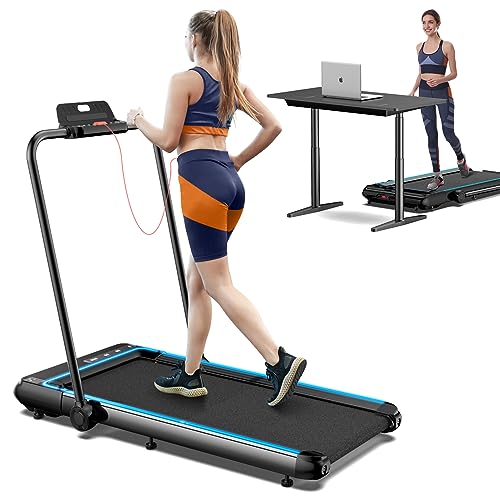In the past few years, the UK has actually seen an impressive increase in home fitness, with lots of people choosing the benefit and security of working out within the convenience of their homes. Home treadmills have actually emerged as a main choice for physical fitness lovers seeking to maintain their workout regimens without the requirement for a gym subscription. This article provides an informative introduction of home treadmills available in the UK, covering their benefits, types, functions to think about, and responses to some often asked concerns.
Investing in a home treadmill offers many benefits, making it an appealing alternative for anybody focused on improving their fitness. Here are some of the key advantages:

Convenience: With a treadmill in the house, users can work out at any time without going through gym hours or weather.
Customization: Individuals can customize their workouts according to their fitness levels and preferences, changing speed, incline, and workout program as required.
Affordable: Over time, purchasing a treadmill can save cash on gym memberships, especially for those who exercise routinely.
Privacy: For those who might feel awkward about working out in public areas, a home treadmill in uk permits for a more unwinded fitness experience.
Household Friendly: A treadmill can be utilized by member of the family of different fitness levels, making it a flexible addition to the home.
When it pertains to choosing a home treadmill in the UK, there are numerous types readily available. Each type caters to various requirements and choices:
Manual Treadmills: These treadmills require users to produce the belt motion through their own effort. They tend to be cheaper however need more effort to use.
Electric Treadmills: The most popular choice among home users, electric treadmills come with a motor that powers the belt, offering more alternatives for speed and incline adjustments.
Folding Treadmills: Perfect for those with limited area, folding treadmills can be quickly collapsed and stored away when not in use.
Treadmill Desks: These multifunctional machines allow users to walk while working, promoting exercise throughout the day.
High-Intensity Interval Training (HIIT) Treadmills: Designed for extreme exercises, these treadmills typically feature specialized programs for interval training.
When selecting a home treadmill, it is necessary to consider numerous features that can substantially affect the running experience. Here are some vital aspects to remember:
Motor Power: Measured in horsepower (HP), a strong motor is needed for a smooth running experience. Try to find a treadmill with at least 2.0 HP for regular use.
Running Surface: The length and width of the running belt matter. A longer belt is necessary for taller users or those who want a more comfortable stride.
Incline Options: Incline settings enable users to mimic hill exercises, including range and strength to regimens. Look for treadmills with adjustable slopes.
Built-in Programs: Many modern treadmills come with pre-set exercise programs designed for various physical fitness goals, such as weight-loss, endurance, and speed training.
Security Features: Emergency stop buttons and safety keys are important for avoiding accidents during operation.
Foldability: For those with restricted area, consider a folding treadmill that can be quickly kept away when not in usage.
Guarantee and Customer Support: A good service warranty uses peace of mind. Try to find options that offer detailed protection on parts and labour.
| Treadmill Type | Rate Range | Motor Power | Incline Options | Suggested For |
|---|---|---|---|---|
| Handbook Treadmills | ₤ 100 - ₤ 300 | N/A | Fixed (if any) | Budget-conscious users |
| Electric Treadmills | ₤ 300 - ₤ 1,500 | 2.0 HP - 4.5 HP | Adjustable (0-15%) | Most users |
| Folding Treadmills | ₤ 200 - ₤ 1,000 | 1.5 HP - 4.0 HP | Basic to Adjustable | Minimal space users |
| Treadmill Desks | ₤ 300 - ₤ 700 | 1.5 HP - 2.5 HP | Fixed | Remote workers |
| HIIT Treadmills | ₤ 500 - ₤ 2,000 | 2.5 HP - 4.0 HP | Advanced (as much as 20%) | Serious fitness enthusiasts |
1. What is the typical life-span of a home treadmill?
The typical lifespan of a home treadmill can differ commonly depending upon use and quality, however many high-quality treadmills are expected to last in between 7 to 12 years with correct upkeep.
2. Are spending plan treadmills worth it?
Budget treadmills can be a great entry point for casual users, but they may lack toughness, power, and includes compared to mid-range and high-end designs. It's necessary to examine individual requirements and consider buying a resilient model if the treadmill will see regular usage.
3. How much space do I require for a home treadmill?
A basic home treadmill needs about 6-8 feet of length and 3 feet of width, but it's smart to account for additional area around it for security and comfort during workouts.
4. What kinds of workouts can I do on a treadmill?
Treadmills can accommodate different exercises, including walking, jogging, running, interval training, and even incline workouts to build strength and endurance.
5. Can I use a treadmill while seeing tv?
Yes, lots of users take pleasure in viewing TV programs or films while walking or operating on a treadmill; however, it is vital to keep focus on your exercise to ensure safety.
Investing in a home treadmill can be a transformative step towards accomplishing fitness objectives and preserving an active lifestyle. With countless choices available in the UK market, it is important to examine personal needs, space, and spending plan before making a choice. By comprehending the various types of treadmills and important features, users can find the perfect machine that fits their lifestyle, making it possible for an efficient and enjoyable exercise experience from the convenience of home.
